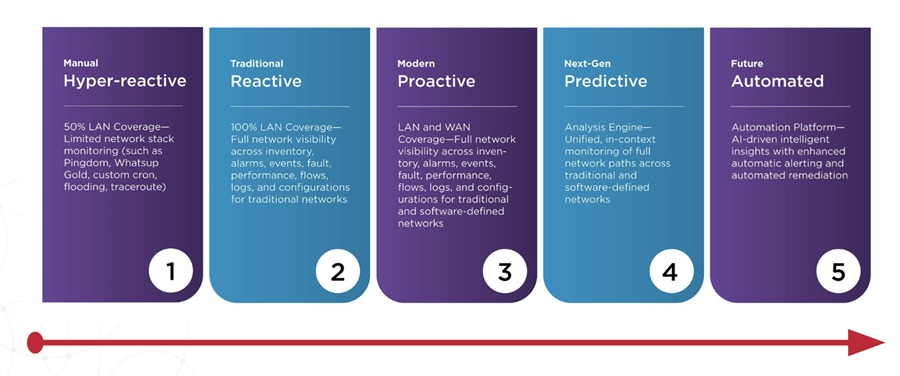
It wasn't so long ago that enterprises housed their critical business applications within their own network of servers and client computers. Monitoring and troubleshooting performance issues like latency was far easier. So, even though our network monitoring and diagnostics tools have improved greatly, the introduction of a myriad interconnected SaaS applications and cloud hosted services have greatly complicated our typical network landscape, causing knock-on effects like latency to appear.
As enterprises outsource more and more of their applications and data hosting to external vendors, they introduce more weak links into the network
As enterprises outsource more and more of their applications and data hosting to external vendors, they introduce more weak links into the network. SaaS services are generally reliable, but without a dedicated connection they can only be as good as the internet connection they're using.
From a network management perspective, the secondary issue with externally hosted apps and services is that the IT team has far less control and visibility, making it more difficult to keep vendors honest about meeting their service level agreements (SLAs).
Monitoring and troubleshooting the network traffic within the relatively controlled environment of an enterprise headquarters is manageable for most IT teams. But for organizations built on a distributed business model with multiple branch offices or remote workers, using dedicated MPLS lines quickly becomes cost prohibitive. When you consider that the traffic from applications like Salesforce, Slack, Office 365, Citrix and others typically bypasses HQ, it's not surprising that latency is becoming more common and increasingly difficult to troubleshoot.
One of the first casualties of latency is VoIP call quality, which manifests as unnatural delays in phone conversations. With the explosive growth of VoIP and other UCaaS applications, this problem will continue to grow. Another area where latency takes its toll is in data transfer speeds. This can lead to a series of cascading problems, particularly when large data files or medical records are being transferred or copied from one location to another. Latency can be an issue for large data transactions like database replication, too, requiring more time to carry out routine activities.
The Impact of Distributed Networks and SaaS
Enterprise network performance monitoring needs to shift out of the data center
With so many connections to the internet from so many locations, it makes sense that enterprise network performance monitoring needs to shift out of the data center. One of the best approaches is to find tools that monitor the connection at all of their remote locations. Most of us use applications like Outlook, Word and Excel on an almost daily basis. If we're using Office 365, these applications are probably configured to connect to Azure rather than the enterprise data center. If the IT team doesn't actively monitor network performance directly at the branch office, then they completely lose sight of the user experience at that location. They may think that the network is performing well, when in fact the users are being frustrated by an undiagnosed problem.
When traffic from SaaS vendors and other cloud-based storage providers travels to and from an organization, it can be impacted by jitter, trace route and sometimes compute speed, meaning that latency becomes a very serious possibility for end users and customers. Working with vendors who have a physical footprint close to where the data is needed is one way to minimize potential issues caused by distance. But even in a parallel process, you may have thousands or millions of connections trying to get through at once, causing a tiny delay. Those delays build up and become much worse over long distances.
Is Machine Learning the Answer?
We've all heard about the power of AI and machine learning to help automate aspects of network management, but it's even difficult for these cutting-edge tools to minimize latency. The problem stems from the fact that we cannot accurately predict when a switch or router will become overloaded with traffic. The delay may be just a millisecond or a hundred milliseconds at most, but once a piece of equipment is overloaded, the data gets stuck in a queue until it can be processed. Is machine learning the answer? Maybe, but we're not there yet.
Take the Broad, Narrow Approaches
Despite all the benefits of SaaS solutions, latency will continue to be a challenge unless corporate IT teams rethink their approach to network management. In a nutshell, they need to take a broad, decentralized approach to network monitoring that encompasses the entire network and all its branch locations. And they need to find better ways of monitoring and improving true end-user experience. Once they understand what users are experiencing, in real time, they will see – and hopefully fix – severe latency issues before end users even realize there was a problem.


